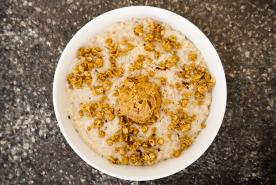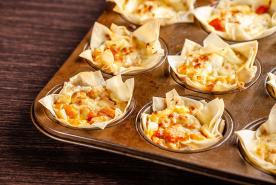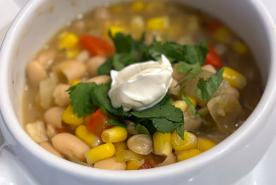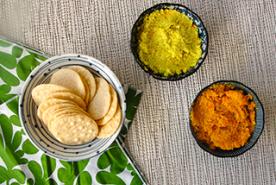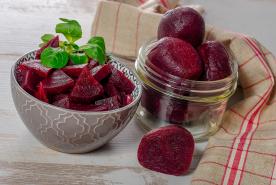Last Updated: January 02, 2023
Medically reviewed by NKF Patient Education Team
Table of Contents
- Why are low phosphorus cheeses superfoods?
- Low phosphorus cheese and kidney disease
- Chronic kidney disease (CKD) and transplant
- Hemodialysis (3 times/week)
- Daily home and nocturnal hemodialysis or peritoneal dialysis
- Kidney stones
- What cheese are kidney-friendly?
- Recipe–Macaroni and cheese
- For more information, contact the National Kidney Foundation
- Want to save this information for later?
While many kinds of cheese are high in phosphorus and sodium, there are lower phosphorus and sodium cheeses more suitable for people with kidney disease. Most cheeses are also high in saturated fat; but lower-fat versions of many cheeses are available. Cheese comes in many different flavors—mild to sharp, nutty to pungent—as well as different textures from creamy to dry and hard.
Why are low phosphorus cheeses superfoods?
- Cheese is a good source of calcium, protein, vitamin B12, and vitamin A, and phosphorus.
- Some cheeses may contain probiotics or “good” bacteria to improve digestive health, including Swiss, Gouda, Gruyere, cheddar, and cottage cheese.
- Cheese can be eaten alone for a delicious treat, prepared as a dip, or enhance the flavor of your favorite dish.
Low phosphorus cheese and kidney disease
The amount and type of cheese you can have will depend on your stage of kidney disease or the type of dialysis you receive. If you need to limit phosphorus, look for ingredients on the label that contain “phos”—this means additional phosphorus ingredients have been added, usually in processed cheese sauce, canned spray cheese and pasteurized cheese products, and processed American cheese. Find a kidney dietitian near you.
Chronic kidney disease (CKD) and transplant
Recommended sodium intake for CKD is 2300 mg per day, so use caution and choose low-sodium cheese options. Phosphorus does not need to be limited unless laboratory results show high phosphorus levels; your kidney dietitian will let you know if you need to limit phosphorus. People limiting their protein intake need to consider the protein content of cheese.
For kidney transplant, it is recommended to avoid all unpasteurized dairy products for the life of the transplant (note: most cheese sold in grocery stores are pasteurized). Patients who receive transplants are on immunosuppressive medications which makes the body more susceptible to foodborne illnesses.
Hemodialysis (3 times/week)
Choose low-sodium options for fluid and blood pressure control. If you need to limit phosphorus, choose from the lower-phosphorus list on the next page and avoid cheeses with phosphorus additives. Talk to your kidney dietitian about how much and which cheeses are appropriate.
Daily home and nocturnal hemodialysis or peritoneal dialysis
Daily home and nocturnal hemodialysis remove more phosphorus and fluid from the body, so more cheese may be allowed in the diet. Patients receiving peritoneal dialysis still need to limit phosphorus. Talk to your kidney dietitian about how you can fit cheese into your kidney diet plan.
Kidney stones
For calcium oxalate stones, eating calcium with meals can help prevent stone formation. With cysteine stones or uric acid stones, limited protein from animal sources is recommended. Talk to your doctor and kidney dietitian about the type of kidney stones you have and how you can include cheese in your diet.
What cheese are kidney-friendly?
| Cheese | Serving size | Phosphorus | Sodium | Potassium | Protein |
|---|---|---|---|---|---|
| Cream cheese | 1 oz=2 Tbsp | 32 mg | 96 mg | 37 mg | 1.8 g |
| Ricotta cheese | ¼ cup | 49 mg | 26 mg | 136 mg | 3.5 g |
| Goat cheese (soft) | 1 oz | 72 mg | 103 mg | 7 mg | 5.2 g |
| Monterey jack cheese | 1 oz | 124 mg | 150 mg | 25 mg | 6.9 g |
| Muenster cheese | 1 oz | 130mg | 174 mg | 38 mg | 6.6 g |
| Parmesan cheese, grated | ½ oz, 1 Tbsp | 40 mg | 93 mg | 5 mg | 1.9 g |
| Mozzarella cheese | 1 oz | 105 mg | 106 mg | 22 mg | 6.2 g |
| Brie cheese | 1 oz | 53 mg | 176 mg | 43 mg | 5.8 g |
| Swiss cheese | 1 oz | 159 mg | 54 mg | 31 mg | 7.5 g |
| Low-sodium cheddar or Colby cheese | 1 oz | 136 mg | 6 mg | 32 mg | 6.7 g |
Recipe–Macaroni and cheese
Serving size: 4 servings per recipe
Ingredients
- 1 cup uncooked noodles, any shape
- 3 cups water
- ½ cup cheddar cheese, grated
- 1 teaspoon unsalted butter
- ¼ teaspoon dry ground mustard
Directions
- Boil water, add noodles, and cook for 5-7 minutes or until tender.
- Drain.
- While still very hot, sprinkle noodles with cheese then stir in butter and ground mustard.
Nutritional information
Calories...152
Carbohydrates...18 g
Dietary fiber...6 g
Protein...7 g
Sodium...90 mg
Potassium...52 mg
Phosphorus...107 mg
Source: Northwest Kidney Centers https://www.nwkidney.org/recipe/mac-in-a-flash-macaroni-cheese/
Want to save this information for later?
Download the National Kidney Foundation’s Fact Sheet: Kidney-Friendly Superfoods: Low Phosphorus Cheese
This content is provided for informational use only and is not intended as medical advice or as a substitute for the medical advice of a healthcare professional.









